What Position Sensor Types and Brands are Stocked in Australia?
The best way to answer this question is by giving you an overview of the wide range of position sensor types and brands that ADM offers to Australian industries.
For over 30 years ADM Instrument Engineering has built a solid reputation across Australia as a reliable supplier of precision instrumentation for process and industrial automation applications, including position measurement solutions.
Simply put, a position sensor is a device that can detect the movement of an object in a straight line (linear position sensor) or by its angular movement (rotary position sensor).
ADM represents 6 manufacturers of position sensors in Australia:
- POSITAL
- UniMeasure
- Midori
- Seika
- Monitran
- RDP Electronics
You can browse our product range on this website by clicking on the following link:
Position Sensing and Measurement
POSITAL Linear Position Sensors
POSITAL is a German company who produces high qualiy draw wire position transducers. One of the POSITAL's strengths is that within their product range they support most of the commonly used communication protocols including CANopen, Profibus, DeviceNet, J1939, Interbus, EtherCAT, Ethernet/IP, ProfiNet, Powerlink, Modbus+Ethernet TCP, and SSI. POSITAL joined the ADM stable in May 2019,
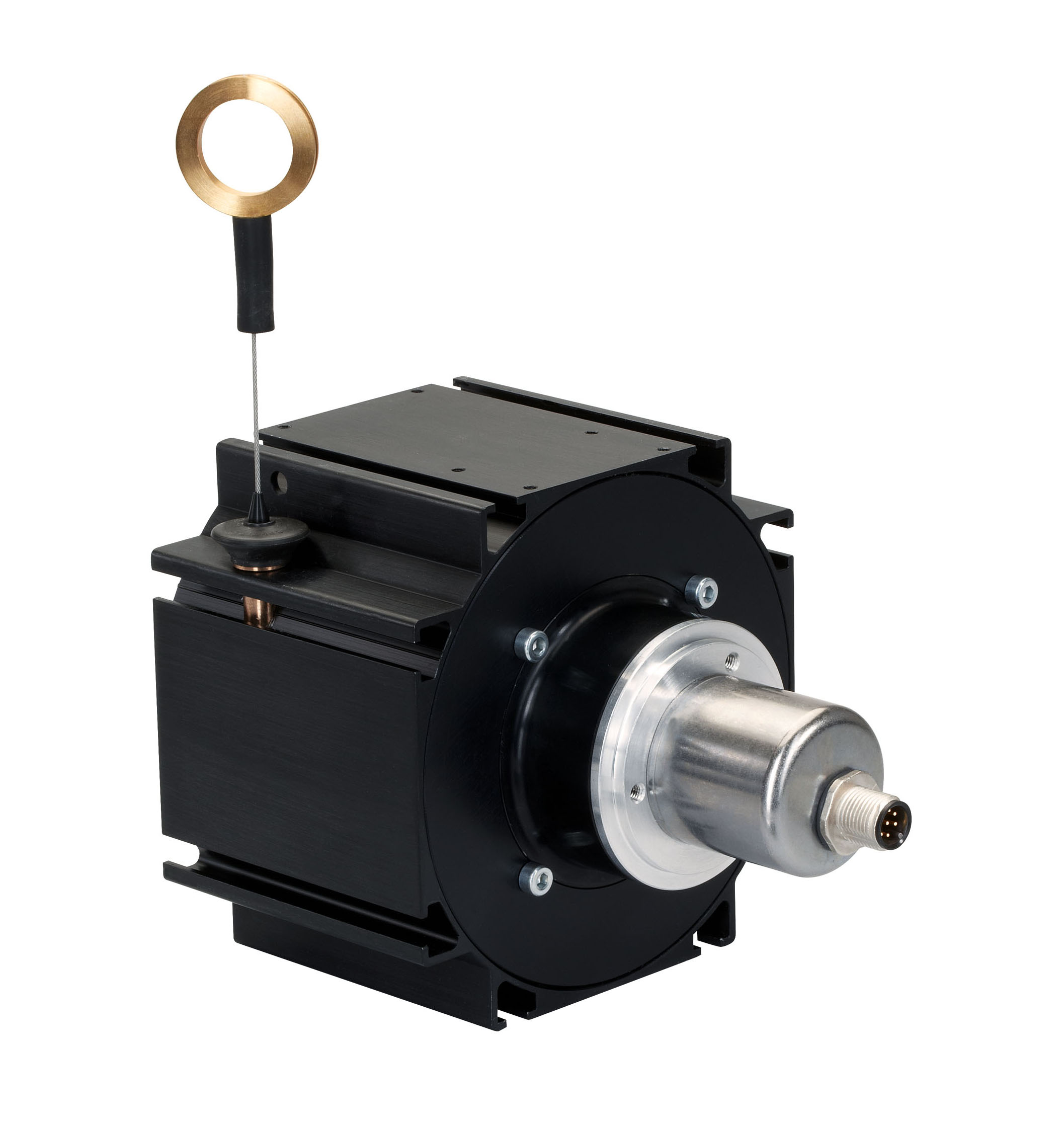
There are a wide selection of measuring lengths available, ranging from 1 to 15m. Absolute position measurement is possible with resolutions of up to 2 µm offered. Customers can expect high linearity, even with long cycle times.
UniMeasure Draw Wire Position Sensors
Draw wire linear position sensors are also known as yo-yo pots, or string pots.
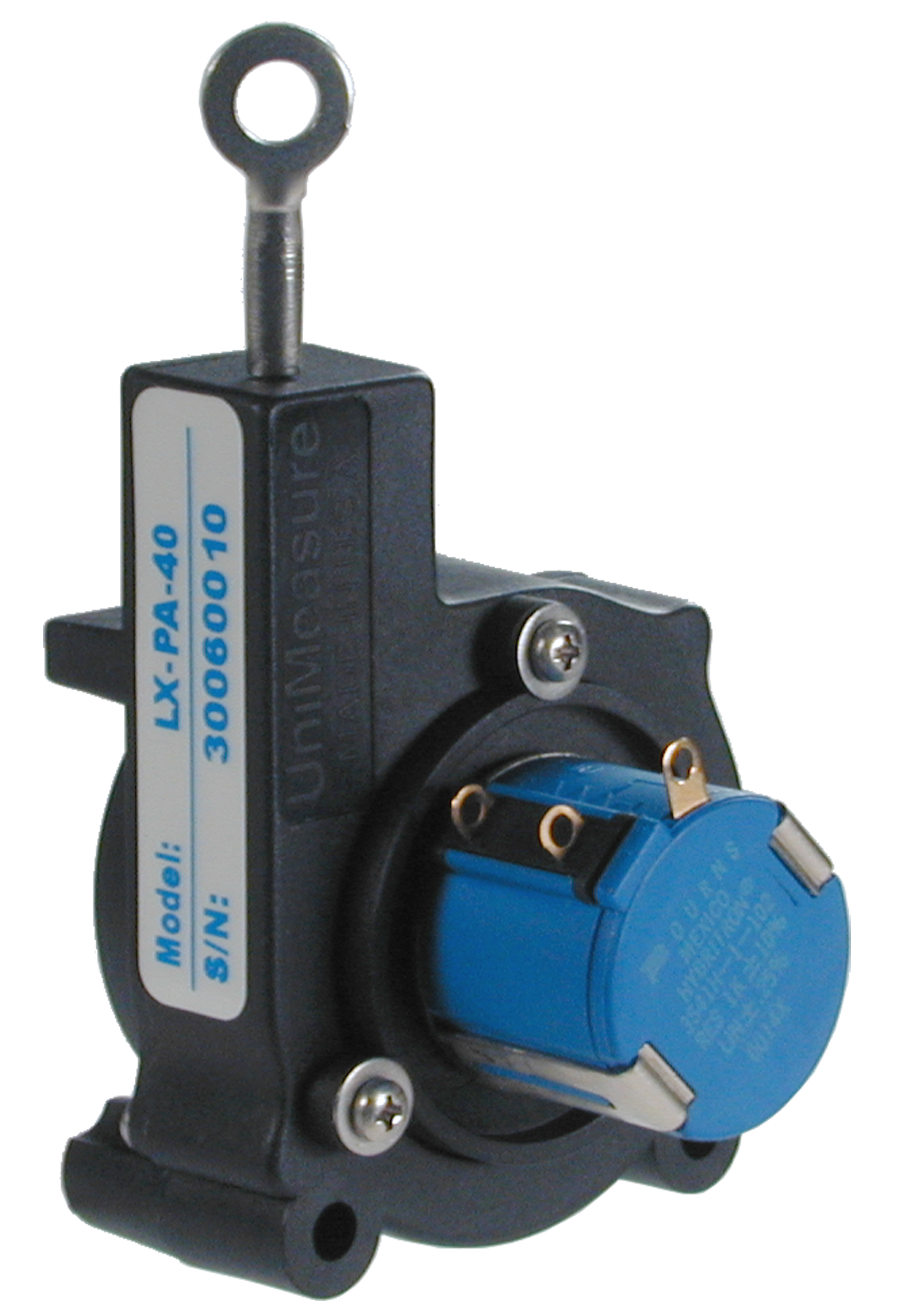
Draw wire position sensors use a fine flexible stainless steel cable and a spring loaded spool. The wire is attached to the moving target object. As the target moves, the transducer generates an electrical signal that is proportional to the length of wire that has been extracted.
Because the draw wire position sensor has a flexible wire rope attached to the moving target, the alignment requirements are not as critical as with other linear position sensors. There are even extension cables available, should you wish to mount the position sensor 'away from the action'.
One of the biggest advantages with UniMeasure draw wire position sensors is that they can be repaired and serviced by ADM.
UniMeasure offer the below electrical output options within their product range:
- Ratiometric voltage
- Hall effect voltage
- TTL digital
- 4-20mA
- 0-5V, 0-10V, ±5V, ±10V
Example Applications for UniMeasure Draw Wire Position Sensors
ADM has supplied a large number of UniMeasure draw wire position sensors for use in numerous applications, such as:
Saw Mills
Draw wire position sensors are used to monitor the position of the saw blade. They are totally impervious to dust, sawdust and wood meal.
Helicopter Simulators
Compact draw wire position sensors are used to provide feedback from the joysticks inside the simulator.
Vehicle Crash Testing
An Australian university uses draw wire positon sensors in vehicle crash safety testing equipment. The vehicles are crashed into solid walls to see how they absorb the force of impact.
Building Materials Cyclone Testing
Another Australian university uses draw wire position sensors to monitor the movements of different types of walls, when exposed to wind pressures that are experienced during cyclones.
Forklift Trucks
Draw wire sensors are used to monitor the vertical travel of the forks on forklift trucks.
Advantages of Draw Wire Position Transducers
EASIER TO INSTALL
Most other types of linear position sensors, such as LVDTs and linear potentiometers need to be attached to the moving target via a rigid rod. In order to get an accurate measurement and to avoid damage to the sensor, this rod must be perfectly aligned with the moving target.
Draw wire transducers don't require perfectly parallel alignment. This means they take very little time to install and can be positioned in tight, or difficult to access areas. It also allows you to mount the transducer in a location, where it is less likely to be exposed to dust and moisture.
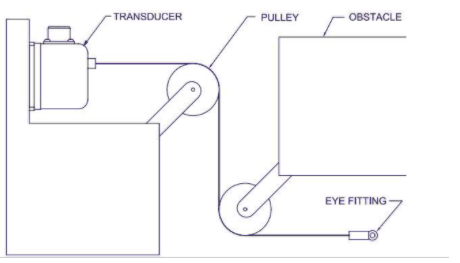
With the UniMeasure draw wire transducers, you can also stipulate the direction of the wire rope’s exit direction when ordering. This makes these transducers highly flexible and remarkably easy to work with.
SUITABLE FOR HARSH ENVIRONMENTS
Some UniMeasure draw wire transducers are available with an IP68 ingress protection rating. So, they will continue to give reliable service even when exposed to dust and moisture.
Compared to other linear position sensors, draw wire transducers tend to be more cost effective. What’s more they are serviceable. ADM can repair and recalibrate your UniMeasure draw wire transducer, should it ever be necessary. This can be a less costly exercise than replacing the transducer.
HIGHLY ACCURATE
UniMeasure wire drawn linear position transducers give you excellent linearity and repeatability at full scale, making them perfect for a wide variety of applications.
COMPATIBLE WITH MOST PLCS, ANALOGUE CONTROLLERS AND DISPLAYS
UniMeasure offers you a choice of commonly used industry-standard output signals:
- Potentiometric (Voltage Divider)
- 0...10 Volts DC
- 4...20 mA (2-wire)
- 0...20 mA (3-wire)
- Incremental Encoder (Quadrature)
Within the UniMeasure range you can choose from measuring ranges from as small as 0-50mm, all the way up to 0-50.8m.
DOWNSIDES?
Well it is hard to think of any. The only application they are not really suitable for is measuring very rapid repeating movements. For this type of application, we recommend an LVDT as there is no physical electrical contact across the LVDT’s position sensing element. So, it has an infinite resolution and a very long life-cycle.
Other APPLICATIONS
UniMeasure draw wire transducers can be found in a wide array of linear positioning sensing applications right across Australia, such as:
- Boom extension measurements on cranes.
- Rudder position monitoring on hovercraft.
- Floor flex testing.
- Gate and valve position monitoring.
- Extrusion presses.
- Medical Equipment.
- Fork lift positioning.
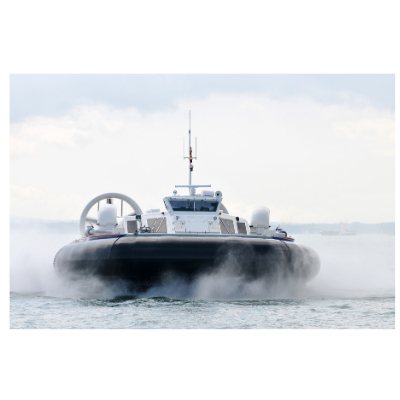
This is far from an exhaustive list, but gives a very good idea of how flexible and robust a UniMeasure draw wire transducer is.
Midori Position Sensors
One of the most common types of position sensor in use is the potentiometer. Midori specialises in manufacturing high quality potentiometers for measuring both linear position and rotary position.
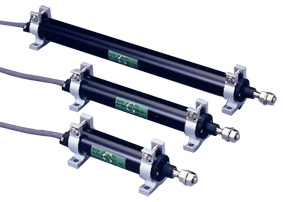
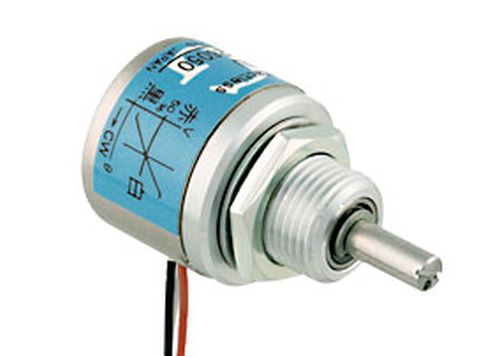
Example Applications for Midori Position Sensors
Rudder Position on Marine Vessels
The Midori CPP-45B rotary position sensor is used to monitor and report the rudder position on marine vessels.
Feedback on wind direction anemometers
The Bureau of Meteorology use the Midori CPP-45B rotary position sensor to measure the rotation of their wind direction anemometers.
Slew Angle Measurement
The Midori CP-2UKN are used for slew angle measurement with on mining equipment, they have also been used on large trailer hitches so that drivers do not turn machines too sharply.
Linear Potentiometers
Linear Potentiometers offer a reliable and very cost-effective linear position monitoring solution.
However, it is advisable to use a linear potentiometer from a recognised reputable manufacturer. ADM stocks the Midori range of Linear Potentiometers.
This is because Midori has a strong reputation for manufacturing reliable linear potentiometers.
SELECTING A SUITABLE LINEAR POTENTIOMETER
There are some cheap and quite nasty linear potentiometers out there, which just aren’t suited to industrial automation applications. They really are only suitable for low cost audio and hi-fi equipment.
Cheap linear potentiometers tend to use carbon resistive tracks. The trouble with carbon is that it doesn’t age well and doesn’t like DC potentials. This has forced many design engineers to go to the expense of using LVDTs in industrial control applications, when it may have not been necessary to do so.
GOOD QUALITY LINEAR POTENTIOMETERS
Midori Linear Potentiometers have dual conductive plastic tracks. These are far superior to carbon resistive tracks and work well with DC excitation voltages. They are extremely reliable, typically being rated at around 1 million cycles. This makes them perfect for many industrial automation applications.
If your application involves very rapid and repetitive linear strokes, then we would recommend an LVDT transducer, as there is no electrical contact across the transducer position sensing element which ensures a very long life.
However, linear potentiometers are a good reliable solution for industrial applications such as conveyor guide rail position monitoring, which do not involve continual rapid repetitive movements.
Linear potentiometers come either with or without a spring return on the rod. Your application will determine which type you will need. For damp or dusty environments we recommend that you use a linear potentiometer with an IP65 ingress protection rating.
Midori linear potentiometers are available with resistance values such at 1kΩ, 2kΩ, 5kΩ or 10kΩ.
Monitran & RDP Electronics Position Sensors
Both Monitran and RDP Electronics are British manufacturers of LVDT type linear position sensors.
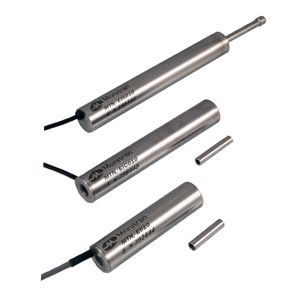
Advantages of LVDT Position Sensors
LVDT transducers remain one of the most commonly used linear position tranducers in industrial applications, recognised as a well-established, rugged and reliable transducer technology.
LVDT transducers were originally used for taking dimensional readings in laboratories, and continue to be used for this purpose today.
Since then they gained popularity in a wide variety of industrial monitoring and control applications.
Due to their fundamental design and mode of operation LVDTs are the perfect solution for measuring high speed and high frequency movements on mechanical structures, offering a number advantages over other types of linear position transducer.
Construction
An LVDT transducer is a transformer with a core that is free to move between its primary and secondary windings. The secondary winding is in two halves, wound in opposite directions, so that when the primary windings are energised, with a constant amplitude AC supply, the voltage induced in one half of the secondary winding will be 180o out of phase to the other.
The secondary windings are connected in series, so that the LVDT’s output will be the sum of the induced, and out-of-phase, voltages. When the core is positioned such that the induction in both halves of the secondary winding is equal but opposite, the output is 0V. This is also referred to as “the null position”. The secondary output signal is then processed by a phase-sensitive demodulator which is switched at the same frequency as the excitation signal.
Depending on how the LVDT transducer is to interface with other systems, the output is further conditioned to produce either a unipolar or bipolar voltage or current. Example output ranges include 0 to 5VDC (i.e. unipolar) and ±5VDC (i.e. bipolar). Some of our LVDTs output the industry-standard 24VDC 4-20mA.
The Benefits of using LVDT Positon Sensors
One key advantage with an LVDT transducer is that there is no physical electrical contact across the transducer position sensing element, an LVDT outputs clean data, has an infinite resolution and a very long life cycle.
When talking LVDT transducers it is important not to confuse sample rate with frequency response. The parameter being measured is the analogue frequency response.
For example, a mechanical oscillation of 500 repetitions per second would be faithfully reproduced by the LVDT output. A typical LVDT and amplifier combination can have a mechanical frequency response of up to 500 Hz.
Where applications need to go faster, this can be enabled by modifications to the signal conditioning electronics.
ADM offers a number of different types of position sensors for the measurement of linear displacement and recommends LVDT position sensors for applications where reliability and accuracy are of high importance.
For example in robotic automation assemblies, as their advantages make them suited to applications with repeated high speed movements.
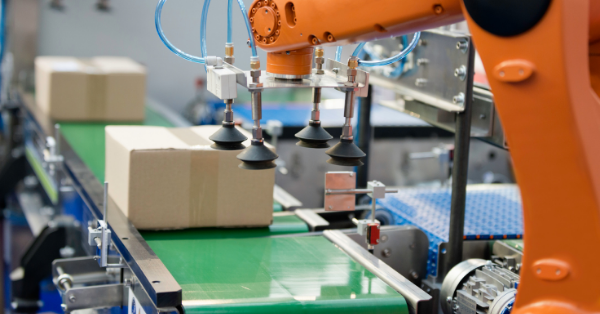
All of the LVDT transducers that ADM offers are constructed from stainless steel. Different ingress protection ratings are available on request.
Configurations
Another advantage with LVDT transducers is that they are available in different configurations; ‘spring return’, ‘guided’ and ‘unguided’. These determine the LVDT frequency response.
A spring return type LVDT transducer is limited by the ratio of the mass of the armiture compared to the strength of the spring, which typically on a short transducer imposes a limit of the order of 10Hz.
A captive type LVDT transducer is not be restricted in this way but because it contains guidance bearings, it will eventually show signs of wear if exposed to multi-millions of cycles.
The recommended LVDT transducer configuration to use for high frequency applications is the unguided type. This version can be arranged to make physical contact between the armature and the body of the transducer and so can operate indefinitely at high frequencies.
SUBMERSIBLE LVDT TRANSDUCERS IN STOCK
ADM has stock of RDP Electronic’s DCW series of submersible LVDT linear position transducers.
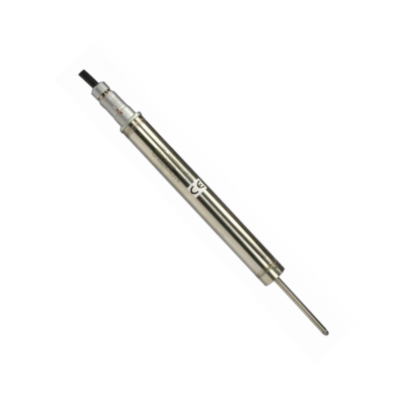
Using the standard connector arrangement of the DCW LVDT transducer, an IP68 (10 bar) rating is achieved once the connector is fitted.
This makes the DCW series perfect for any application where it could be splashed by or become submersed in non-corrosive fluids.
One recent example we have is in a mining application on the tail end of a machine shaft. The IP integrity is required because of the high humidity environment and presence of high volumes of coal dust.
Other possible applications include:
- Provision of position feedback
- aeroplane control surfaces, robot arm, joy-stick, hydraulic actuator, assembly line mechanicals
- Valve position
- water/sewerage industry, throttle control, marine hatches and plumbing
- Structural movement
- underwater installations, bridges, buildings, cranes
Non-magnetic fluids can flood the armature tube without affecting the operation of the transducer.
Being a Linear Variable Differential Transformer (LVDT) type transducer means that they are probably the most robust and reliable linear position sensor type available.
The big advantage of the LVDT sensor's principle is that there is no electrical contact across the transducer position sensing element, which gives you clean data, infinite resolution and a very long life. They are ideal for any application, where repeated and rapid movement needs to be monitored.
The actual model ADM has in stock is model number DCW2000B.
This is a captive guided model, with a measuring range of +/- 50mm. Captive guidance means the transducer has bearings to guide the armature inside the measurement sensor. Captive LVDTs are for position measurement applications where external guidance of the armature is poor, or difficult to achieve.
The DCW2000B has an analogue voltage output of -5V ~+5V, which is commonly used on mobile equipment applications.
Example Applications for LVDT Linear Position Sensors
Rail Track Testing
LVDT position sensors are used on Australian rail track testing vehicles to monitor track and foundation deflections.
Water Flow and Associated Stresses on Bridge Pylons
We like to mention this application as an interesting historical fact. ADM supplied LVDT linear position sensors that were installed on a piece of equipment, used to monitor the flow of water around the wreck of the “Lake Illawarra”. This is the vessel that collided with Tasman Bridge, causing it to collapse. The wreck is too deep to cause any navigational risk, but it is monitored to ensure the water flow doesn’t cause it to shift and lead to any other damage to the bridge pylons. We understand this monitoring is still going on today.
Geological Research – Minerals & Resources
ADM has supplied a number of LVDT linear position sensors to universities around Australia, who are conducting geological research. They are interested in how certain types of rocks behave when pressure is exerted in laboratory conditions. The LVDT position sensors provide an accurate method of measuring micro movement.
Measuring Linear Motion over Small Distances
LVDT linear position sensors excel at gauging very small distances, like measuring disc brake run out. They can be built to tolerate harsh environments, such as the high pressure in hydraulic oil, high temperature and in high radiation environments.
INCLINOMETERS FOR INDUSTRIAL APPLICATIONS
Inclinometers come in all shapes and sizes. At ADM Instrument Engineering we specialise in inclinometers for industrial applications.
Inclinometers are used to measure the angle of the target in relation to level ground. Typically, inclinometers are used in industrial applications such as:
- Port loader position monitoring
- Crane boom angle measurement
- Anti-tilt devices on mobile equipment
You can browse ADM’s product range by clicking on the following link:
X-Y AXIS INCLINOMETERS
X-Y Axis inclinometers are used when you need to monitor the angle position along two axes. For this reason, they are also sometimes called dual axis inclinometers.
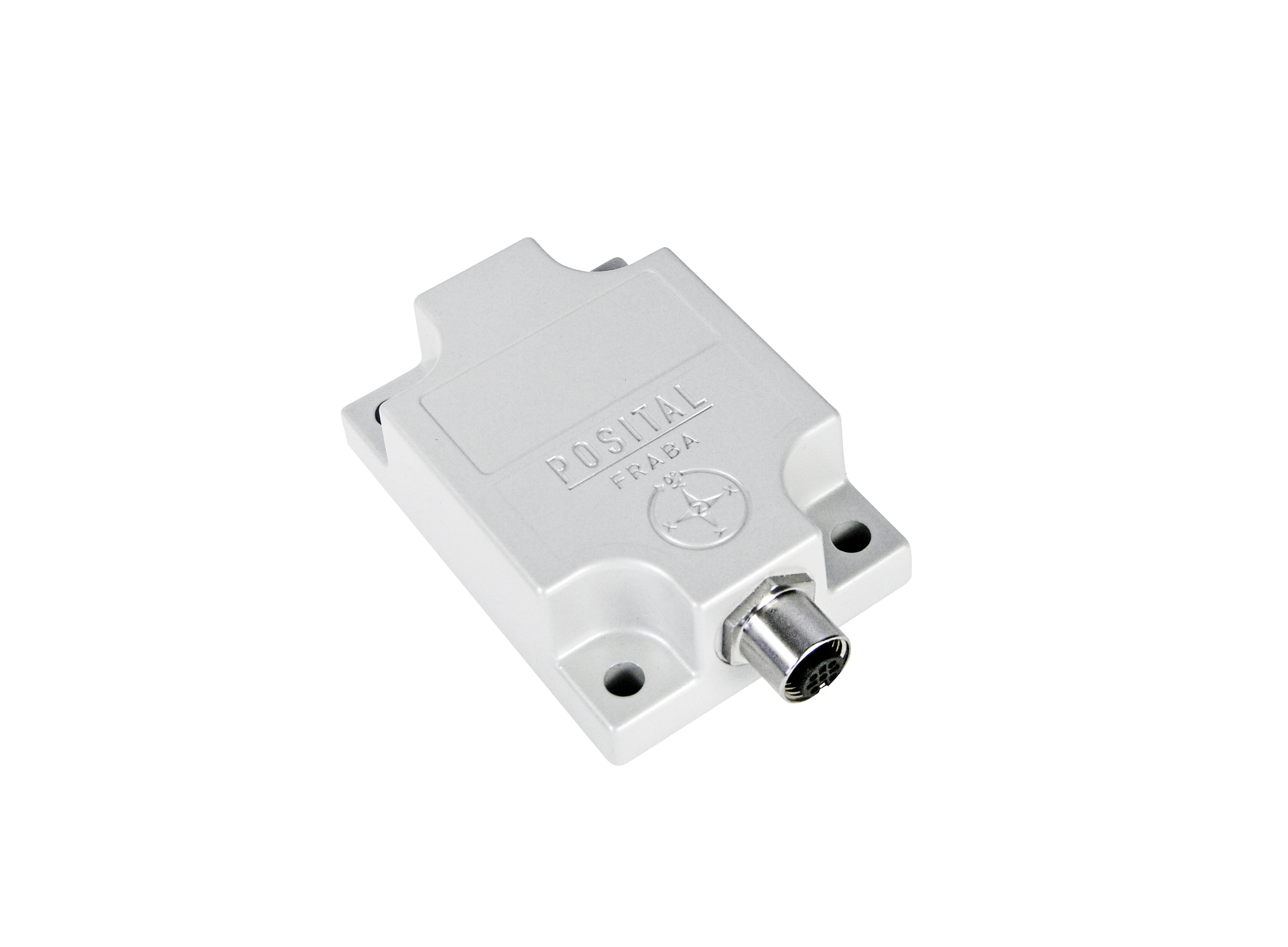
One of the most common applications for this type of inclinometer is anti-tilt systems on mobile machinery and equipment.
ADM offers a range of IP67 X-Y inclinometers, which are protected against moisture and dust ingress. This makes them ideal for use in the harsh environments that mobile machinery often must operate in.

POSITAL has a good range of options, with a rugged design and IP protection ratings right up to IP69K, which is suitable for high pressure wash down areas. Despite this POSITAL inclinometers are very affordable.
ADM also stocks the Midori PMP series of X-Y axis inclinometers.
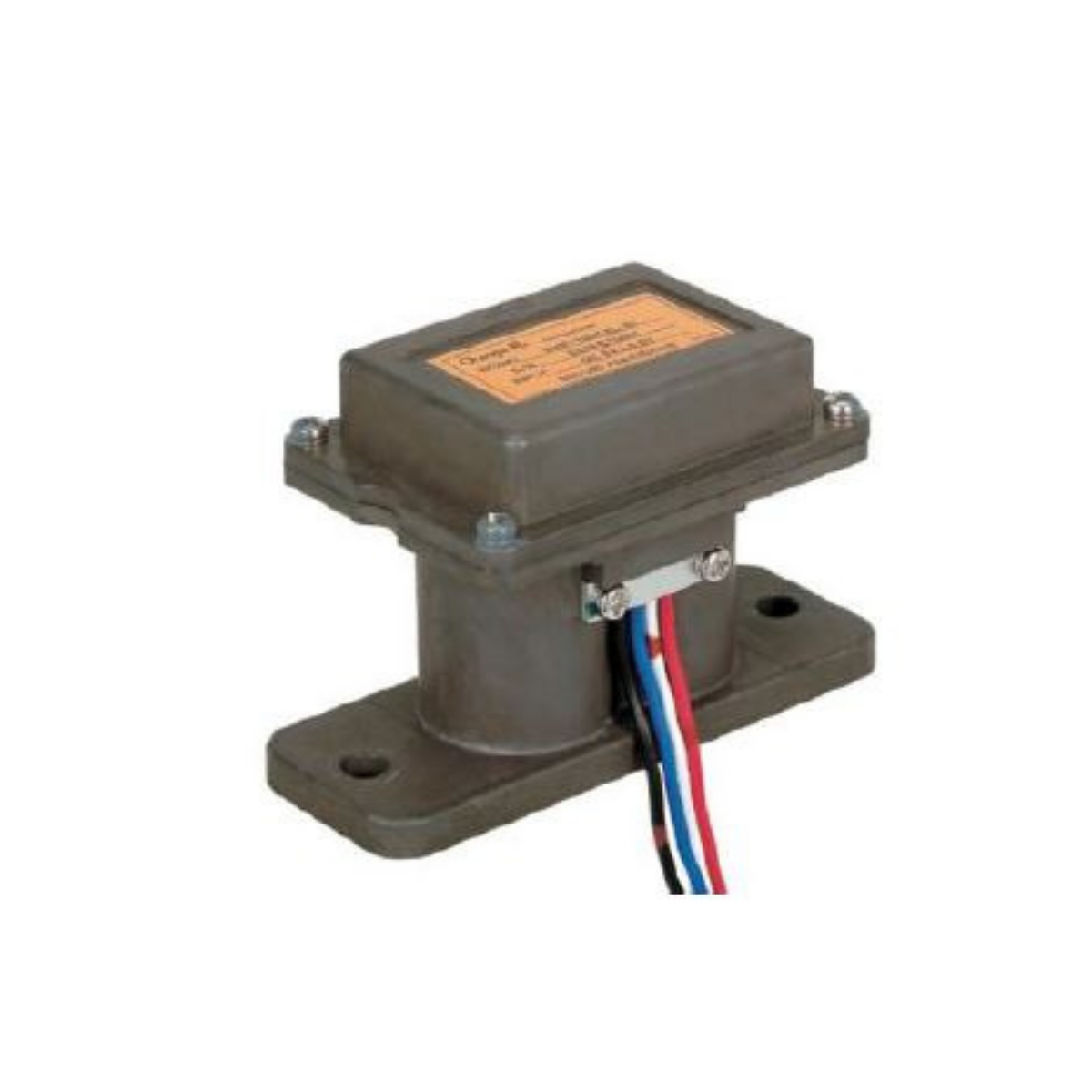
The Midori PMP series inclinometers are used on mining dredges, cranes, tilting furnaces, etc. They are used to measure inclination relative to level ground. The majority of these applications are to prevent tilt or toppling.
X AXIS INCLINOMETERS
An inclinometer that only measures angles along a single axis is called an X-axis inclinometer, also sometimes referred to as single axis inclinometer. These are commonly used on equipment such as port loaders and cranes to monitor the angle position of an extendable boom.
The Seika NGxI series is particularly popular for this application because of its rugged design.
Seika Inclinometers
Seika is a German manufacturer of this type of position sensor and are renowned for producing highly accurate and reliable devices. The Seika inclinometers are superbly damped and give accurate measurements even in noise and vibration environments.
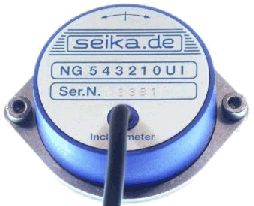
These are capacitive and liquid based inclinometers with integrated sensor electronics and a current amplifier. Electronic temperature compensation makes up for the temperature drift of the sensitivity of the primary transformer. An integrated, highly stable voltage regulator ensures stable operation for a range of supply voltages.
The Seika NGxI inclinometer works by providing a linear relationship between the angle to be measured (up to 80 degrees depending on the model used) and the output signal.
The measuring time constant can be matched to the requirements of the measurement task by hardware programming.
Power for the inclinometer is obtained from the measurement current loop, so there is no need for a separate power supply, enabling operation with two wire connection.
Example Applications for Seika Inclinometers
Ship Loaders
ADM has supplied Seika inclinometers, which are used on ship loaders in ports all around Australia. This type of position sensor is used to monitor the angle of the arm, or boom, which tilts up or down during the loading process. The Seika inclinometers are an X axis only type of inclinometer, which makes them perfect for this application.
INCLINOMETER ELECTRICAL CONNECTION OPTIONS
Within ADM’s range of inclinometers, we can offer various electrical connection and interface options.
Some of the options available are:
- Ratiometric voltage
- 0.5 ~ 4.5V
- 0 ~ 10V
- 4 ~ 20mA
- RS-485
- SAE J1939
- CANopen
- CANBus
What this means is that ADM will be able to offer an inclinometer that is compatible with your existing PLC and communications network.
Senspro Magnetostrictive Position Sensors
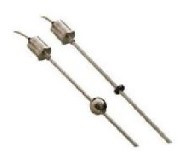
Magnetostrictive linear position sensors have a contactless design. An external movable magnet marks the target's position, which eliminates the wear, noise and erroneous signal problems. This gives good durability without any recalibration and reliability.
Monitoring the position of Hydraulic Rams
The design of the Senspro magnetostrictive type linear position sensor makes it perfect for installing inside hydraulic rams.
Therefore, it is commonly used for monitoring the position of hydraulic rams on any vehicle, or other heavy duty equipment, such as cranes.
Water Height Monitoring
The ring magnet is attached to a stainless steel float. By installing the sensor into a PVC pipe with bleed holes, wave action can be damped and controlled to give accurate water storage levels.
If you are working on a project that involves the measurement, or monitoring of either linear position, or rotary position, then contact ADM Instrument Engineering. A member of our expert ream will gladly discuss the benefits that each type of position sensor offers, so that you can make an informed decision on which is best for your application.
WAS THIS INFORMATION USEFUL?
Why not share it with you industry peers on LinkedIn? Simply click on the blue LinkedIn share icon below.

